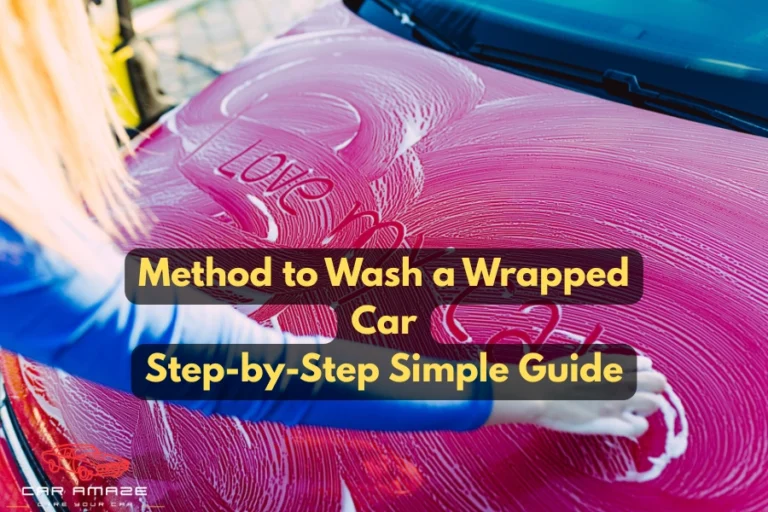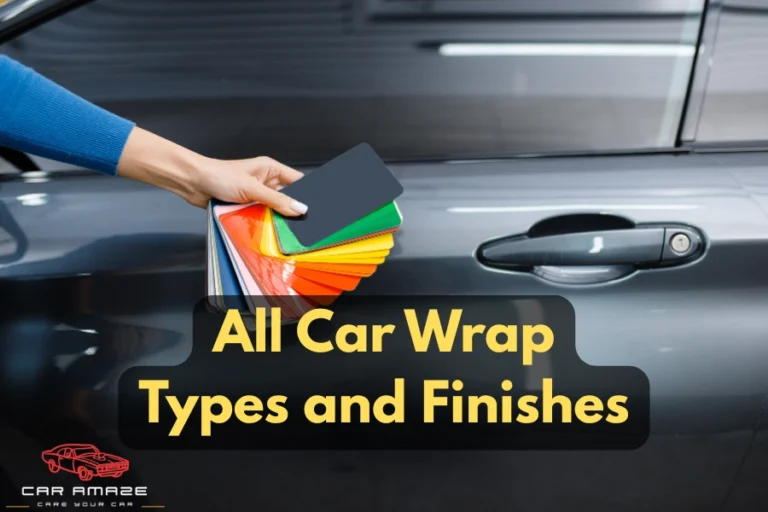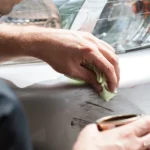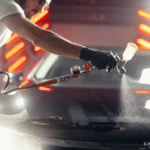Liquid Wrapping a Car: Overview, Benefits, Cost, and More
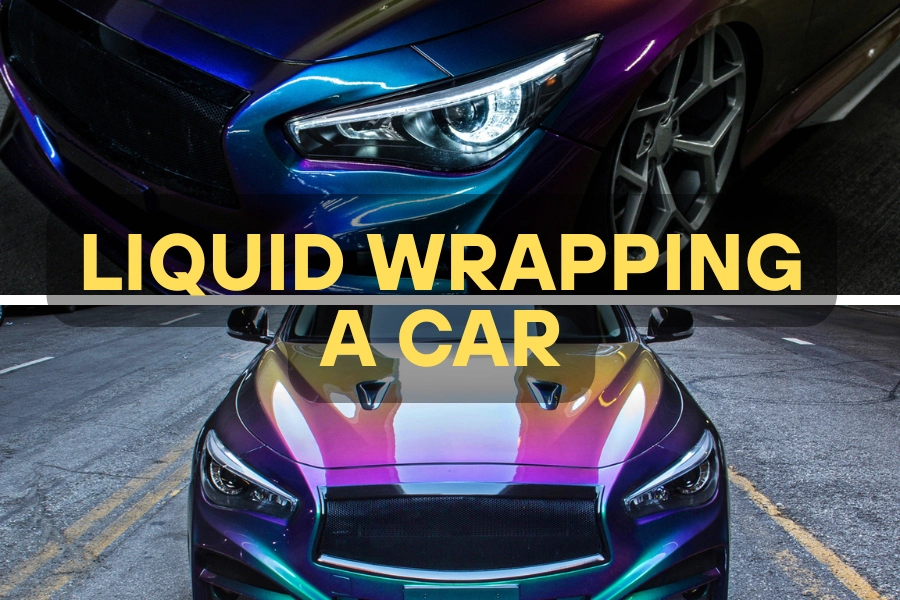
Liquid wrapping a car is a new method of transforming the appearance of your car without the use of paint. Rather than using a spray can or brush, a liquid is used on the surface of the car. When it dries, it becomes a protective and tough film on the car. This blog will help you know what a liquid wrap car is, how it operates, and when you should apply it.
Table of contents
- Overview of Liquid Wrap Car
- Liquid Wrap vs Traditional Paint
- Application Process
- Maintenance and Care of Liquid Wrap Car
- Liquid Wrap Removal Process
- Cost and Durability of Liquid Wrapping
- Popular Trends and Colors
- Environmental Impact
- Conclusion
- FAQs
Overview of Liquid Wrap Car
Here is the brief overview of the liquid wrap, its benefits, and reasons for choosing it:
What is Liquid Wrapping a Car?
Liquid wrapping a car refers to the practice of spraying or brushing a particular liquid onto your surface of the car that hardens into a flexible film after some time. This film acts as a sticker that covers your vehicle, enhances its look, and makes it look smooth and glossy. The liquid is created from sophisticated polymers and resins that form a hard protective layer. You can remove or replace this wrap without damaging the car’s original paint, unlike the conventional method.
Benefits of Liquid Wrapping a Car
There are numerous advantages to using liquid wrap on a vehicle instead of paint. Some of the most important advantages are:
Cost Savings: Liquid wrapping may be cheaper than a complete paint job. A fresh coat of paint costs around $5,000, whereas liquid wraps can cost around $1,000 to $2,000.
Easy Customization: You can choose from a lot of colors and designs with liquid car wraps. It is also easy to modify the appearance if you become bored with the existing design.
Protection: This treatment provides an additional layer of protection on your car’s paint. It protects your car from scratches, dirt, and UV rays.
Quick Application: Liquid wrapping is often quicker than a complete painting process, so you can complete it in a very short time.
These benefits make liquid wrapping the preferred choice for car enthusiasts and everyday drivers.
When to Prefer Liquid Wrap Car
Liquid wrapping is ideal if you desire a new appearance for your vehicle but do not wish to make permanent alterations. Use a liquid car wrap when:
- You Want a Temporary Change: If you enjoy experimenting with new colors or designs, liquid wrapping a car allows you to do so.
- Protecting Your Paint: If the original paint on your car is vulnerable to scratches or weathering, using a liquid wrap on the car can protect it.
- Budget-Friendly Makeover: For those who require a new look but are looking to save money, liquid wrapping a car is a budget-friendly option compared to painting.
- Customization for Events: Whether the event is special, promotional, or just to get noticed, liquid wrapping a vehicle provides special design flexibility.
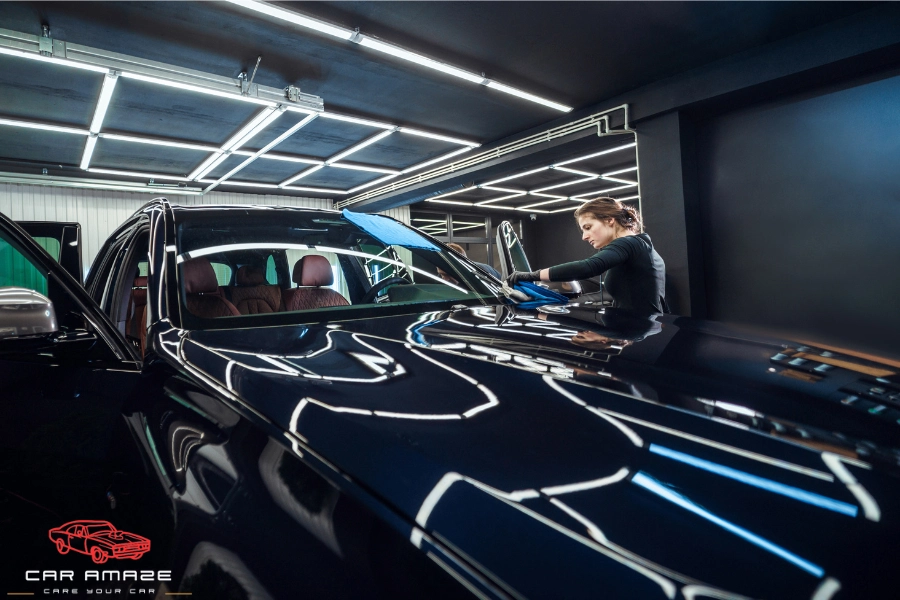
Liquid Wrap vs. Traditional Paint
Although both liquid wrap and vinyl wrap are used to enhance the appearance of a car, they are different. Here are the key differences between both wrap types:
- Application Process: Liquid wrapping is the process of applying liquid that hardens into a film. Vinyl wrap, on the other hand, is made of pre-cut sheets that we carefully apply to cars to prevent bubbles.
- Finish and Flexibility: Liquid car wraps provide a smooth and seamless finish because the liquid will spread evenly. Incomaprison, vinyl wraps may have seams or edges.
- Removal: Liquid wraps are easy to remove without damaging the original paint. In contrast, wrapping a car can damage the paint and leave an adhesive residue if applied incorrectly.
- Cost: Both processes can be affordable, but most car owners prefer liquid wraps, which are cheaper in the long term.
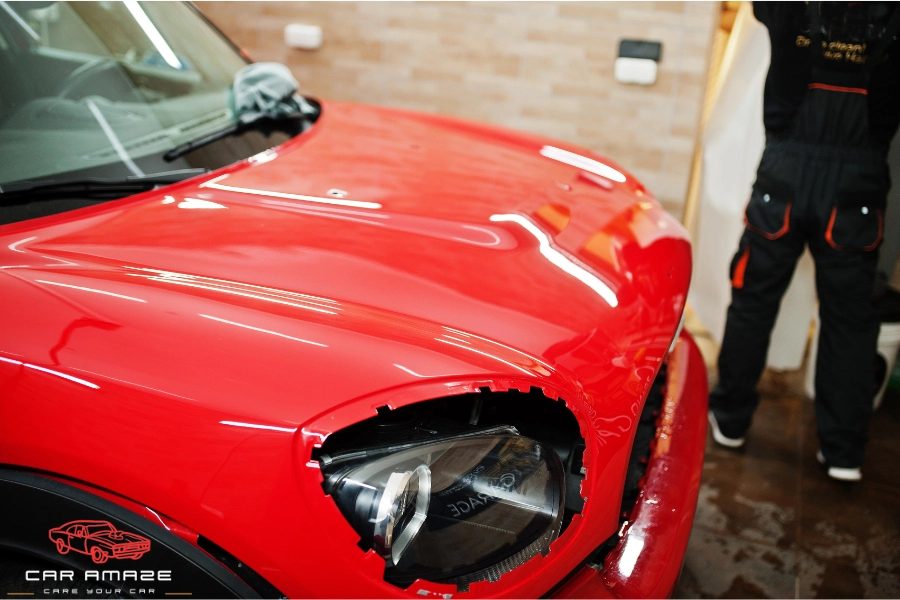
This comparison shows that although both methods are good for protection and appearance. However, liquid wrapping a car is recommended for its simplicity and durable finish.
Advantages Over Traditional Paint Jobs
Compared to conventional paintwork, a liquid wrap car has the following main benefits:
- Speed: Liquid wrapping is done in a matter of days, whereas a paint job may take weeks.
- Cost-Effective: Classic paint jobs are pricey. Liquid wrapping a vehicle is usually less costly and still provides you with a top-notch finish.
- Less Mess: Painting a vehicle produces fumes and needs a controlled environment. Liquid wraps may be applied in less confined conditions.
- Easily Changeable: If you prefer a different appearance, taking off a liquid wrap is a lot easier than having to repaint your vehicle.
The normal vinyl wrap has many benefits, but the liquid wrap is a preferable choice for numerous car owners.
Application Process
How to Apply Liquid Wrap to Your Car
Applying a liquid wrap to the car is a straightforward process, but it needs attention. Below is the step-by-step process to apply liquid wrap:
- Clean the Surface: Clean your car to remove dirt, grease, and other residues. A clean surface is essential to allow the liquid to adhere effectively.
- Prepare the Area: Select a clean and dry area with good ventilation. This allows for even drying of the liquid.
- Apply the Liquid: Spray a gun or brush to apply the liquid wrap on the surface of your vehicle. Apply the liquid wrap to small sections step by step.
- Let It Dry: Let the liquid dry. It could be anywhere from a few hours to a day, depending on the product.
- Inspect and Touch Up: After it dries, inspect for any drips or uneven areas. Use a brush to touch up any blemishes.
You should adhere strictly to the product instructions for smooth and efficient liquid wrapping a car.
DIY Liquid Wrapping a Car
It is common for car owners to attempt a liquid car wrap on their own, but it requires huge practice, skills, and tools. These are some tips for a DIY process:
- Gather the Right Tools
- Follow Instructions
- Practice on a Small Area
- Work Slowly
Tips for Applying Liquid Car Wrap
To ensure that you apply the liquid wrap car perfectly, keep these additional tips in mind:
- Use Quality Products
- Keep a steady hand
- Inspect the Weather
- Protective Wear
- Keep Tools Clean
Following these tips can help you achieve a smooth and professional finish.
Maintenance and Care of Liquid Wrap Car
Proper care ensures that your car with liquid wrap looks very cool and good. Regular cleaning using mild products and handling your car with caution extends the lifespan of the wrap. Follow these tips to maintain your car in pristine condition.
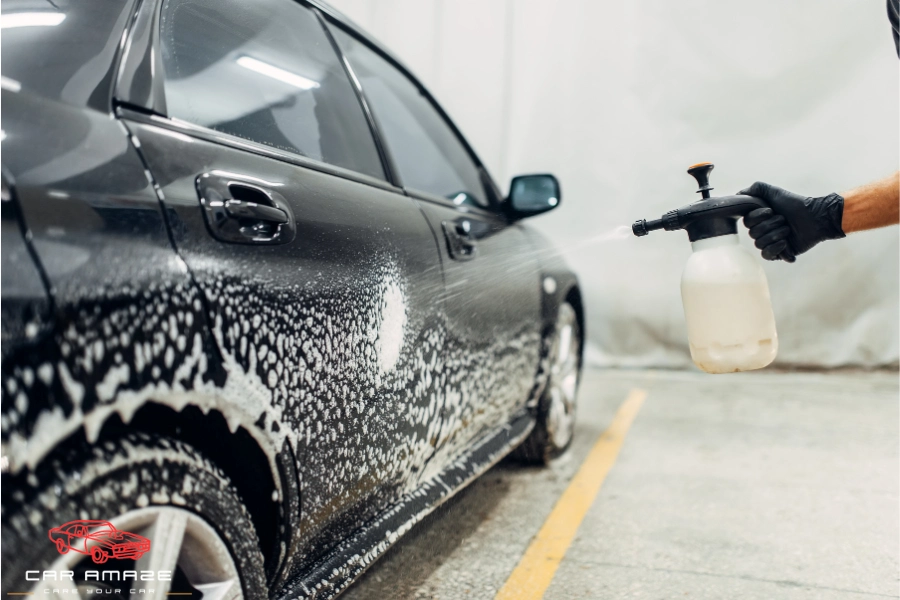
1. Caring for Your Liquid-Wrapped Car
After completing your liquid wrap project, regularly wash your car with mild soap and water. Don’t use harsh chemicals, and go for hand washing over automated washing to avoid scratches and maintain the wrap.
2. Extending the Life of Your Liquid Wrap
To increase the lifespan of liquid wrap, wash your car every two weeks and park under the shade to minimize fading. Use soft cloths and non-abrasive cleaners for a longer-lasting finish.
3. Best Cleaning Products for Liquid-Wrapped Cars
Opt for mild cleaning products for your liquid vinyl car wrap. Utilize a mild shampoo, microfiber cloths, and non-abrasive cleaners. They keep the liquid wrap shiny and well preserved.
4. How to Protect a Liquid Wrap on Car from Damage
Avoid harsh chemicals that can corrode your liquid wrap and protect it. Apply protective coverings, drive safely to avoid scratches, and cover your car with a car cover when left outdoors. These actions ensure your car wrap lasts longer.
5. Mistakes to Avoid When Liquid Wrapping a Car
Skipping surface preparation, rushing the application process, employing poor-quality tools, and overlooking drying time. All these errors will result in bad adhesion and a destroyed finish, so do it right and take your time to get it perfect.
Liquid Wrap Removal Process
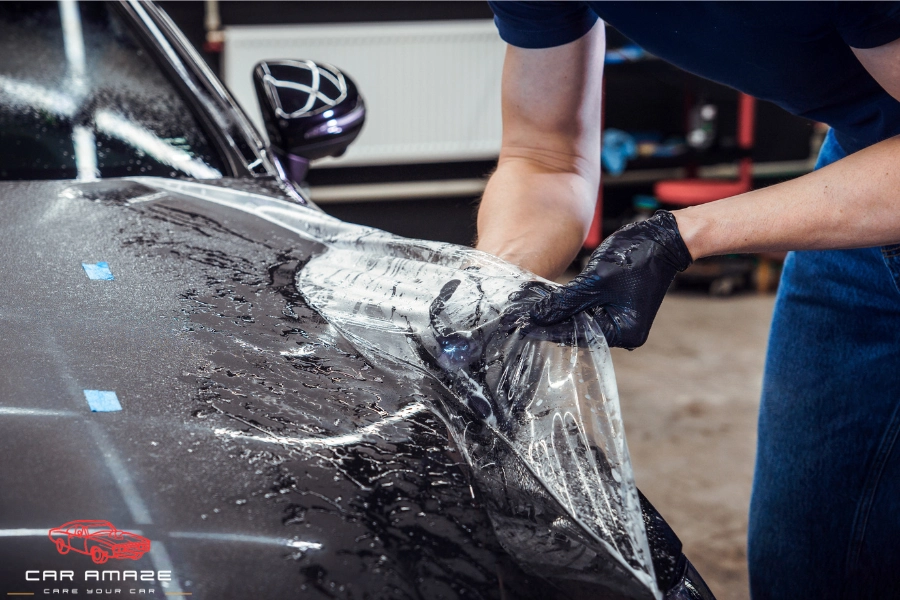
Though a liquid wrap car is made to be long-lasting, there may be a point in time when you feel like removing it. Here is an easy instruction:
- Soften the Wrap: Use warm water or a heat gun to heat up the wrap. It is easier to peel off.
- Peel Carefully: Begin in one corner and slowly peel the wrap from the surface of the car.
- Clean Residues: Gently clean out any remaining residue using a mild cleaner.
- Inspect Your Paint: Inspect your car’s original paint for any damage after removing the wrap.
Cost and Durability of Liquid Wrapping
One of the major reasons people choose a liquid wrap car is the cost savings compared to a traditional paint job. Many of you will have a question in mind: Is it cheaper to paint or wrap a car? On average, a full paint job can cost between $3,000 to $5,000. In contrast, liquid wrapping a car can cost around $1,000 to $2,000. This means you might save up to 50% on your vehicle makeover.
How Long Does a Liquid Wrap Last?
The durability of a liquid car wrap depends on many factors, such as climate, maintenance, and the quality of the product. Typically, a liquid wrap can last between 3 and 5 years. With proper care, some wraps may even last longer. Regular cleaning, avoiding direct sunlight, and careful driving can help extend the life of the liquid wrap on your car. It is important to check your product’s warranty and guidelines for more detailed longevity estimates.
Popular Trends and Colors
Here are the trendy and beautiful design ideas for liquid wrap on car:
1. Trending Liquid Wrap Colors for Cars
Vehicle owners enjoy applying liquid wrap to their cars to make them stand out. Some of the popular colors in liquid vehicle wraps are:
Matte Black: A sophisticated, contemporary appearance.
Gloss White: A shiny and clean appearance.
Metallic Blue: A bright color that glows under the sun.
Candy Red: A bold option that is noticeable on the road.
Chameleon Effects: Colors dependent on the angle of the light.
These popular colors for car wrap designs let you showcase your personality and transform your car into a more exciting vehicle.
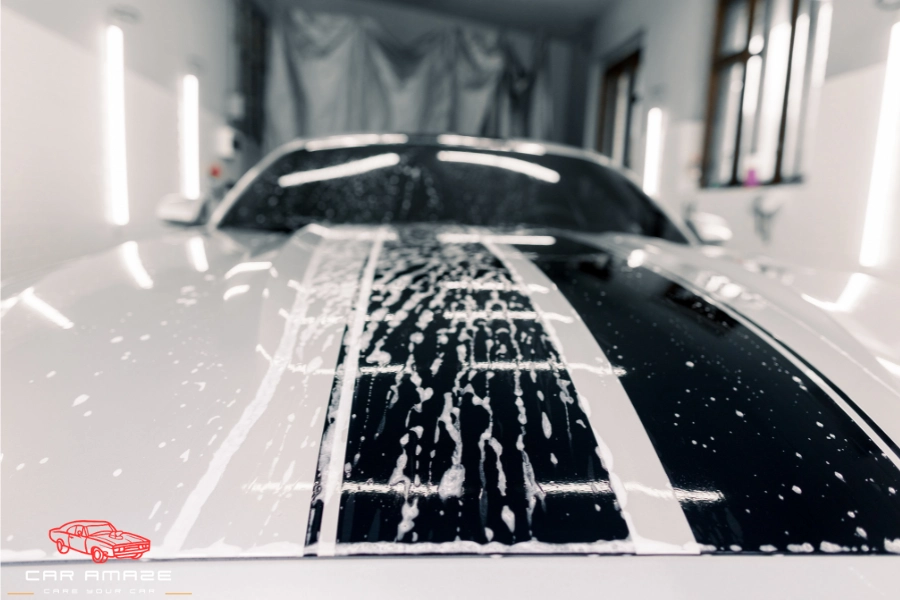
2. Custom Designs with Liquid Wrapping
Aside from solid colors, other car enthusiasts prefer custom smart car wrap ideas. You can merge stripes, logos, or even paintings to make your car look one-of-a-kind. Personal designs are a good way to market a company, commemorate an anniversary, or merely showcase your artistic flair. In liquid wrapping a vehicle, there are just about no limitations.
Environmental Impact
One question that is on the minds of many car owners is whether liquid wrapping a car is environmentally friendly. Most liquid wraps are more environmentally friendly than paint. They tend to have fewer volatile organic compounds (VOCs), so they emit fewer toxic chemicals into the air. Some even contain recycled materials in their ingredients.
Conclusion
Liquid wrapping a car is an easy and budget-friendly method of transforming the appearance of your car. It has numerous advantages compared to painting a car, including cost-effectiveness, simplicity in application, and protection. If you desire a new vibrant color or a distinctive design, the liquid wrap car allows you the liberty of giving your car a fresh new look easily. I hope you have gained enough knowledge about liquid wrapping from this guide.
FAQs
How long does a liquid wrap last on a car?
A good liquid wrap, when properly applied, will last for 3 to 5 years if it is taken care of. Frequent cleaning, staying away from direct sunlight, and proper maintenance can prolong its lifespan.
Is liquid car wrap better than Plasti Dip?
Most car owners discover that liquid car wraps offer a smoother, longer-lasting finish than Plasti Dip. Both methods are useful, but liquid wrapping a car is generally considered superior for its durability and simpler removal.
Is it cheaper to wrap or paint a car?
In most scenarios, liquid wrapping a car costs less than applying a full original paint job. Prices for liquid wrapping typically lie in the area of $1,000 to $2,000 versus $3,000 to $5,000 for painting.
Does liquid wrap mess up car paint?
When properly applied and removed, a liquid wrap will not damage your car’s original paint. It is a removable protective coating that can be removed safely if you wish to revert to your car’s original finish.
Is it better to liquid wrap or dry wrap a car?
Liquid wrapping a car will typically provide a smoother finish without the seams or bubbles that may show up on dry vinyl wraps. The most suitable choice would, however, be based on your requirements, budget, and taste.
